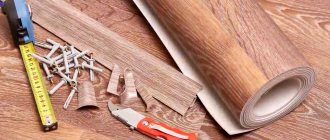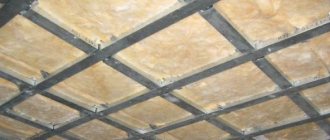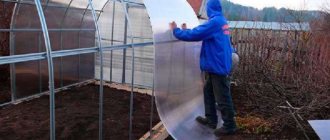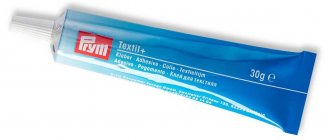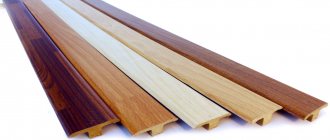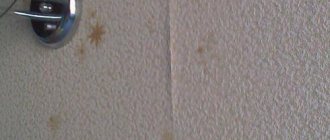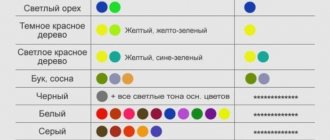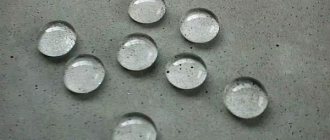The use of polycarbonate for construction in a variety of areas is due to the strength, aesthetics and durability of this material.
Structures built using polycarbonate can have a wide variety of shapes and purposes. And the simplicity of the design does not always make it possible to dispense with connecting panels of material with a special profile and fastening with self-tapping screws. How then to realize the design idea?
The use of adhesives when connecting individual structural elements is often the only possible option for obtaining the integrity and strength of the finished product. Based on the nature of polycarbonate, selecting an adhesive with the required properties is of particular importance when performing work.
Bonding polycarbonate: adhesives, materials and their features
In everyday life, there are two main means of gluing polycarbonate - these are temporary materials with an adhesive base and specialized adhesives for major repairs. Let's look at their features in more detail.
Temporary methods
The following types of materials are used for temporary repair of polycarbonate:
- Insulating tape.
- Scotch.
- Liquid Nails.
- Adhesive tape.
Electrical tape and adhesive tape are most often used to temporarily repair polycarbonate surfaces. As a rule, these are cracks and crevices that occur due to seasonal changes in air temperature, and small punctures. The main disadvantage of this approach is its fragility. Because under the influence of dampness the patches will gradually peel off and lead to repeated even greater rupture.
Therefore, over time, an even larger area of the surface of the polymer material will have to be repaired. Liquid nails are a universal adhesive for quick repairs. With its help, not only holes are sealed, but also joints. In addition, the resulting connection becomes airtight and unaffected by moisture.
Small defect in polycarbonate Source ytimg.com
An alternative to the methods discussed is duct tape. It is flexible, versatility and durable. However, it does not at all have the properties characteristic of branded polycarbonate. Therefore, it is also used temporarily - until the damaged sector is replaced or major repairs are made using special adhesives.
Advice! To quickly fix polycarbonate sheets to each other or other material, double-sided adhesive tape based on acrylic is suitable. It can be either colored or colorless. High adhesive qualities make it universal in relation to any surface.
Glue for overhaul
The modern manufacturing industry produces adhesive compositions that differ in a number of characteristics:
- The material used.
- Mechanism and setting time.
- Composition.
- Application technologies.
- Light transmission capacity.
- Resistant to water, heating, cooling and mechanical stress.
- Degrees of fluidity.
Glue for repairing polycarbonate Source wp.com
Although there are no special adhesives for polycarbonate, nevertheless, for gluing this material, products used for plastics and polymers are used. Such one- or two-component mixtures are made based on the following compounds:
- Polyamides. Based on this substance, compositions are produced that exhibit good adhesive properties under heavy loads. Installation is carried out using hot air heating.
- Ethylene vinyl acetate. Another class of adhesive bases applied under heat. Despite their lower strength compared to other products, adhesives exhibit good elasticity and are resistant to water.
- Polyurethane. This is the most suitable adhesive for polycarbonate - transparent, durable and universal in relation to other materials: metals, wood, glass, plastic. The only negative is that application is only possible using a special device.
- Silicone. Available in tubes. It is easy to use and has good performance properties. However, it does not have a structure that transmits light. It mainly comes in matte white, black and gray shades.
Transparent adhesive for polycarbonate Source stroy-podskazka.ru
Note! Despite suitable performance characteristics, alkali- and solvent-based adhesives cannot be used with polycarbonate. Since the aggressive substances contained in their composition will destroy the material itself at the point of contact.
See also: Catalog of companies that specialize in paints and varnishes and related work
Types of adhesives for joining polycarbonate parts ↑
Polycarbonate adhesive can be classified according to various criteria:
- purpose;
- operating principle;
- composition;
- complexity of the process of use;
- degree of transparency;
- hardening time;
- viscosity
Silicone adhesive
To make the right choice, you need to take into account many parameters to ensure a reliable connection and give the product a flawless appearance.
Modern types of glue, domestic and foreign, presented on the Russian market, have a different base. Widely used substances:
- polyurethane;
- acrylate, methyl methacrylate, cyanoacrylate;
- Si – acetic acid;
- ethylene vinyl acetate;
- polyamide.
The chemical composition largely determines the properties of the glue, its purpose, and application features.
Two-component adhesive requires connection
For simple structures that do not experience significant mechanical loads and strong atmospheric influences during operation, an easy-to-use one-component adhesive is suitable; for complex cases, you have to choose a two-component composition.
Hot-melt adhesive requires melting before use, and some varieties require special surface treatment before gluing. However, there are compositions that experts strongly do not recommend using for polycarbonate.
Types of carbonate and features of its gluing
The solution to the question of how to glue polycarbonate depends on the structure of the material itself. It can be cellular or monolithic. Each of them requires its own adhesive composition. Let's look at the features of selecting and using glue for each case.
Cellular
Polycarbonate with a cellular structure is used primarily for the construction of light, spacious buildings - greenhouses, greenhouses, greenhouses, gazebos, canopies, etc. The main feature of gluing them is to end up with a single, strong structure. Therefore, it is more practical and quick in this case to use one-component adhesives without specialized equipment - from a tube.
Compositions of this type provide the created compound with the following set of performance characteristics:
- Reliability and durability.
- Resistant to moisture and temperature changes.
- Constancy of properties under the influence of UV rays.
Polycarbonate of the cellular variety Source wp.com
This glue also allows you to perform small repairs efficiently. Before sealing a hole in the polycarbonate in a greenhouse, the product is applied along the previously protected surface of the entire perimeter, and then a polycarbonate patch is laid on top. Regardless of whether a local repair is made or the entire structure is mounted during installation, the fragments of material must be pressed against each other with force throughout the entire period of setting of the glue.
Recommendations
Before gluing a polycarbonate structure, it is necessary to perform preparatory procedures that will significantly affect the strength and durability of the result:
- First of all, you will need to treat the material with isopropyl alcohol to make its surface clean and grease-free.
- Then, using a suitable device (gun, syringe, tube with nozzle), glue is applied.
- If the adhesive contains a solvent, then no amount of degreasing can guarantee a strong connection. This element should not be in glue.
Bonding options
There are several typical situations when you need to glue polycarbonate:
- Between themselves.
- In the greenhouse.
- On loaded and non-loaded structures.
Let us examine the features of each case more specifically.
Between themselves
In order for the structure being built to be strong, reliable and durable, it is important not only to know how to glue polycarbonate together, but also how to pre-prepare the surfaces. The general installation diagram for sheets is as follows:
- Contact surfaces are cleaned and degreased.
- The adhesive composition is applied in doses to the parts of the area to be glued.
- The sheets are placed on top of each other or to each other - depending on the chosen method - overlapping or end-to-end.
- For some time, a compressive load is applied to the contacting materials.
- Upon completion of the control time, the load is removed.
- The following structural elements are installed in the same way.
Good to know! For maximum convenience and dosing, the adhesive composition is applied to the surface of the polymer using a tube, gun, applicators or syringes.
Stapling Tips
- To use a hot-curing composition, you will definitely need a glue gun. He also carries out work with ethylene vinyl acetate materials;
- In order for the quality of gluing to be high, the paste should not contain solvents. Otherwise, after a few months, cracks may appear on the surface of the structure;
- Before starting gluing, be sure to conduct a test on a separate area, and remember the expiration date of adhesive compositions.
Let's sum it up
Such a seemingly simple process as gluing polycarbonate can cause many problems if done incorrectly. We advise you to be very careful when choosing an adhesive for gluing and to read the instructions for use so as not to damage the elements or structure you are working with.
Main mistakes
Theoretically, knowledge of how to seal a hole in polycarbonate does not exclude the following series of practical errors:
- Poor cleaning and degreasing of surfaces.
- Insufficient elasticity of the seams formed.
- Destructive reaction of glued materials to the joint due to atmospheric factors or due to improper selection of components.
- Violation of technology.
Recommendation! Most often, silicone glue is used for gluing polycarbonate sheets. It does not violate the structure of the material, has sufficient strength and transparency. However, before applying it, thorough cleaning and degreasing of surfaces is required.
What is not suitable for fixing polycarbonate?
As noted earlier, for polycarbonate you should not use compounds based on alkali and solvents. Due to their high activity, they are able to destroy the structure of the material. After such gluing, the material may darken, and bubbles and cracks may also appear on it after some time.
Molded plastic cannot be glued with solvent-based compounds, as they contribute to its cracking.
Compositions independently obtained from a mixture of polycarbonate and solvent are capable of holding the surface together, thereby forming a rough seam that can come apart under the influence of strong mechanical loads.
A composition containing dichloroethane solvent is also not approved for widespread use. This substance is very harmful to human health, as it has carcinogenic properties. This glue can only be used for production purposes.
Briefly about the main thing
In order to solve the question of how to seal polycarbonate, it is necessary to take into account the type of material, type of construction, adhesive compositions and techniques used for this. For temporary repairs, the following are used: electrical tape, adhesive tape, adhesive tape, and liquid nails. For reliable restoration, adhesives based on the following bases are used:
- Polyamide.
- Polyurethane.
- Silicone.
- Ethylene vinyl acetate.
For gluing cellular polycarbonate, a one-component adhesive from a tube is most often used; for a monolithic one, a two-component adhesive is applied using a special device, and also in the form of rods that harden when heated. Polycarbonate is glued together in various variations - among themselves, in a greenhouse, in loaded and non-loaded structures. Each case has its own characteristics. During the gluing procedure, the main thing is not to violate the technology and not make obvious mistakes.
Ratings 0
What if the design involves a large load during operation?
If the structure requires high strength during operation, it is better to use silicone or polyurethane glue.
To use two-component polyurethane glue, you will need a gun and replacement cartridges. The seam will be optically transparent, and the gluing will be strong.
Silicone adhesive is also very effective, holding cast polycarbonate sheets well even under heavy loads. The market leader is silicone adhesive Q3-7098 from the English company DowCorning Ltd. Chinese Silliconemastic glue also produces good results (there is no need to pre-prime the surface, but the glue does not transmit light well).
Known transparent adhesives include:
- one-component adhesive Kosmopur K1 based on polyurethane;
- two-component compositions Acrifix 190 and Cosmoplast 460;
- Chinese adhesives HE 17017, HE 1908 from Engineering Chemical Ltd.
Compositions of several components are also used. This is Acrifix 5R 0194. It contains 5 components, the base is methyl methacrylate. Even when gluing thick sheets of material with it, the seams will be almost invisible.
Panel cutting technology
Panel cutting technology
The standard width of a polycarbonate sheet is 2.1 m, the length of the sheets is 6 and 12 m. This is too much for arranging a canopy or partition, so the material needs to be cut. Incorrect cutting of panels damages the protective coating and edges of the polycarbonate, which can ruin the appearance of the structure. It is most convenient to use a high-speed circular saw with carbide blades for cutting. In order for the cut edges to be as smooth as possible, the disk must have small, unspaced teeth.
During the cutting process, the panel should be securely fixed to eliminate the slightest vibration. The top film cannot be removed at this stage, because it protects the coating from microscopic damage when cutting. For cut panels, the internal cavities should be cleared of chips, as they will prevent the free flow of condensate.
What is the building material used for?
Polycarbonate is considered a durable plastic, which has a whole list of important characteristics. It is used in various industries - construction, advertising, industry. Products made from polycarbonate are considered durable and lightweight. They are reliable and beautiful in appearance.
When making polycarbonate products, it is necessary to glue individual components together to obtain a single product. To achieve excellent aesthetic characteristics, it is recommended to choose the right adhesive composition for fixing this material.
A high-quality product helps to achieve high strength of the product and preserve the characteristics of the material, making it resistant to mechanical and climatic factors.
Security measures
Do not forget about the high toxicity of these compounds. Absolutely all presented adhesive products are quite aggressive in terms of chemical activity. Their components are certainly dangerous for humans. You only need to work with them wearing gloves, and only in a ventilated area. After work, you need to leave the room and ventilate the room for a long time.
Therefore, these rules are always followed when gluing plexiglass:
- good ventilation of the room;
- turning on forced ventilation if working specifically with ethylene chloride;
- You need to work not only with gloves, but also preferably with safety glasses.
Efficient and safe work!
To learn how and what to glue plexiglass with, see the following video.
Sealing the ends of cellular polycarbonate with perforated tape
For greater convenience, we will present the entire process of installing punched paper tape on the end of a polycarbonate sheet in the form of step-by-step instructions.
Step 1. Remove the film from the SPC that protects the material during storage and transportation.
Step 2. Using a construction knife with a replaceable blade, process the end, trim it, remove all burrs and defects, if any.
Step 3: Inspect the sheet for dirt. This could be not only dust, but also glue residue from the protective film.
Step 4. Using a sponge soaked in soapy water, clean the end of any dirt and degrease it.
Step 5. Dry the end of the cellular polycarbonate sheet. You can remove moisture trapped in the cells using a regular vacuum cleaner.
Step 6. Install or lay the sheet on the workbench, secure with clamps or ask your assistant to do this.
Step 7. Using a tape measure, measure the tape along the width of the end of the sheet and cut it with a construction knife.
Step 8: Carefully peel off the protective paper strip.
Step 9. Attach the tape to the edge of the sheet so that when it is subsequently folded, its middle falls on the end part of the SPC.
Step 10. Iron the part of the tape already glued to one of the edges of the sheet, getting rid of uneven spots and “bubbles”.
Step 11. Fold the tape so that its middle covers the end of the SPK sheet. Iron it in this area.
Step 12. Fold again so that the end of the tape covers the second edge of the sheet. Repeat step 10.
To create a perfectly even and smooth connection between the tape and polycarbonate, use a stitching roller.
The end sealing does not end there - now you need to mount the appropriate profile. Let's look at how this happens step by step.
Step 1. Measure the desired length of the end profile and cut.
Step 2: Clean and degrease it if necessary.
Step 3. Along the length of the end, make holes with a diameter of 3-4 mm in increments of 20-30 cm. They are necessary for the final removal of condensate.
Step 4. Lean the profile against the end of the sheet, the wider edge should be adjacent to the back side of the sheet, facing the inside of the future building.
Step 5. Using a narrow spatula, pry the narrow edge of the end profile and lift it slightly.
Step 6. Place the profile on the end of the SPK sheet. Leave a drainage gap of 3-4 mm between it and the profile.
Video - Gluing perforated tape and installing the end profile
Please note that all of the above steps must be performed before the cellular polycarbonate sheet is mounted on the frame. Otherwise, it will be impossible to lay the perforated tape and end profile.
How can I replace perforated tape?
What to do if there is no perforated tape in the hardware store, but you need to install cellular polycarbonate here and now? Is there any way to replace it and still save a lot of money? Yes, with the proper desire and diligence, it is possible to make a homemade analogue of perforated tape.
High-quality construction tape is used for the base. The main difficulty in this case is the creation of pores
Here you will have to either work extremely carefully and for a long time with the thinnest needle that is in the house, or find a tool that allows you to make holes of small diameter
It is worth understanding that homemade perforated tape will be an order of magnitude inferior to factory samples in terms of its characteristics and that this is only a temporary solution. Subsequently, if possible, remove the cellular polycarbonate sheet and replace the tape.
Profile for polycarbonate
When installing standard arched greenhouses, two types of profiles are used - end and permanent connecting. Other types may also be useful for constructing a homemade greenhouse. Read more here.
If you want the maximum service life of your polycarbonate greenhouse, canopy or fence, be sure to use perforated and sealing tape, as well as other components as needed.
>
The best waterproof glue for plastic
The leader in the list is Cosmofen Plus-S glue (250 rubles). This composition is produced in Germany and has excellent quality and low consumption. It can be used both on polypropylene pipes and on gutters, windows, doors, panels, and other products exposed to water. Glue is often called liquid plastic, because after hardening it literally merges with the plastic.
Glue 88 Luxe (370 rubles) is intended for extensive work, because its packaging is large - 900 ml. The gluing efficiency will be very high, since the solution is viscous and reliably bonds the plastic to other materials. The product produces a durable and moisture-resistant seam, but it takes a long time to dry and has an unpleasant odor.
Foundation destruction
The occurrence of such a problem is unlikely, but if it does happen, then the situation can be corrected.
The base of a greenhouse made of timber is especially susceptible to destruction, so it will need to be replaced periodically, unlike a concrete foundation. In such a situation, the structure is completely dismantled and assembled on a new foundation. It is preferable to do it. If the concrete foundation has cracked, then it is also possible to repair it. First you need to make a dig at the site of the breakdown.
You need to try to do everything as carefully as possible so as not to enlarge the crack.
After this, you need to fill the gap with solution. It is necessary to fill the solution until it stops being absorbed.
How to glue foamed polyethylene
Foamed polymer is a type of polyethylene, which was obtained by introducing a gas hydrocarbon mixture into its structure. This produces a polymer with a porous structure, characterized by flexibility and practicality. Produced in the form of sheet, rope, roll.
To insulate the room, foam material with a foil layer is used.
Polymer foam adhesive:
88 Lux forms a durable, moisture- and frost-resistant seam. Ready for use, does not contain toxic compounds. It is permissible to treat large areas, as the stickiness remains for a long time. Complete hardening and formation of the seam occurs within a day.
Nairit 1 (88 P-1). Manufactured on the basis of chloroprene rubber. The seam is strong and elastic. Ready to use, easy to apply.
Also used for gluing: Foam rubber-2, 88-Metal. Since the choice of adhesives for polyethylene foam is high, you must adhere to the following criteria when purchasing:
- The operating temperature should be close to the insulation used.
- High adhesion must be ensured throughout the use of the material.
- For internal gluing, a compound without toxic compounds is used.
- For external gluing, an adhesive is used that can withstand changing weather conditions.
How to glue plastic - instructions
After acquiring the required composition, it is necessary to prepare the base. The parts should be cleaned, all dirt should be removed from them, and be sure to degrease them with acetone, alcohol, or wash with soap. It is better to sand substrates that are too smooth with sandpaper, this will increase the degree of adhesion. Two-component formulations must be prepared according to the attached instructions.
Here is the procedure for working with glue for plastic:
- take a brush with artificial bristles;
- apply glue to the surface in a thin layer;
- squeeze the parts for a few seconds;
- remove any excess product that has come out immediately;
- place the product under a press, in a vice;
- leave until completely dry.
If dissimilar materials are being connected, for example, plastic and wood, the adhesive composition should be applied to both substrates. When filling thin cracks, you can use a needle to better distribute the glue. For work in the bathroom and other wet rooms, only moisture-resistant glue is used. Despite the heat resistance of most products, this property only applies to glue, and the plastic itself can quickly deteriorate from elevated temperatures.
When working, it is important to regularly ventilate the room to avoid poisoning from harmful fumes. The easiest way to remove fresh and dried glue stains is to use special removers; they are also used to clean containers and tools
Methods of gluing to different surfaces
Plexiglass can be glued not only to each other, it can be glued to other materials. It is often combined with metal, wood, plastic and ordinary glass. In order for the connection to be strong, it is worth knowing the gluing features in each case.
How to glue plexiglass to metal
Sometimes you need to glue products made of plexiglass and metal, but how to make a strong and continuous connection. To do this, you should use the following adhesive compositions:
- Products based on dichloroethane;
- Glue 88;
- Liquid Nails.
The gluing process is carried out according to standard instructions. The surfaces are degreased, prepared, after they are joined, the composition is applied to them. For good fixation, you can place a weight on top for a while.
How to glue plexiglass to wood
Not many people know how plexiglass to wood
First of all, it is important to choose the right adhesive material that will clearly match the composition. The strength and uniformity of the seam will depend on this
The following brands of glue are suitable for gluing products made of plexiglass and wood:
- MAFIX;
- Super glue;
- COSMOFEN.
It is worth doing a test test first to make sure that the products are really suitable for joining different materials. The gluing is carried out according to the general scheme.
How to glue plexiglass to plastic and glass
I would like to note that gluing plexiglass to plastic and glass is quite difficult. Often the seam turns out to be fragile and quickly becomes unusable. Therefore, after gluing, you should not expect that the connection will last a long time.
For gluing, use the following glue:
- COSMOPLAST;
- COSMOFEN;
- COSMOFEN PMMA.
To fix plexiglass products, a variety of adhesive compositions can be used, which can create a uniform and durable seam. Before using them, you should carefully study the composition, structure, appearance and properties. They must be suitable for this particular material, because only they can create a strong connection. And the gluing process itself must be carried out in accordance with the instructions and in compliance with all stages.
Video about the consequences of saving when purchasing polycarbonate material
The best time to carry out such work is a clear and sunny day without precipitation. This will protect parts and elements from unwanted moisture, which can lead to further failures.
The inspection will require careful examination of all structural elements of the greenhouse. First of all, you need to carefully examine the coating itself for the presence of clouding, swelling, cracks, dents or any other deformations.
Following the coating, the frame is inspected. It is necessary to check whether it was damaged during downtime, whether sediments have washed away the supports, and whether the frame products are installed evenly. Corrosion may have appeared on the parts, then they need to be cleaned and covered with a layer of paint.
When inspecting the frame, an ordinary level is useful. They can check the position of the building; it must be located strictly horizontally.
If no shortcomings were found, then you can start using it. Before this, you need to wash the greenhouse from the outside and inside.
Polycarbonate panels are cleaned with a sponge or cloth with warm water and detergents without alkalis or other aggressive substances. Afterwards, rinse everything with clean water.
Which glue is better to choose, hot or cold curing?
Each of the approaches in a certain situation will be the best; at the stage of preparation for performing manipulations, you should think about all the pros and cons. The rules for working with parts using the hot method and the cold method are somewhat different; in order to avoid mistakes when implementing the plan, all points must be considered in advance.
Using a gun will be important for beginners, because when applying the mixture there are no awkward moments, dispensing the solution is quite simple, you will need not to skip places, but to completely coat the joint. A lot depends on the brand of the tool; more expensive samples have an extensive range of functions, which makes the hot fixation method universal.
It is necessary to remember the technical characteristics of the gun when purchasing rods; each type of device has a certain tip diameter for loading the fixing element.
Products with the “EVA” engraving will help you avoid mistakes; such rods are suitable for every gun, they are considered universal, but experts consider products made on the basis of polyamide to be the best options.
When planning to work with small workpieces, you can easily get by with one-component compositions in the form of ready-made liquid from tubes; distributing them is much more difficult, but the quality of adhesion is at a decent level.
There is no need to purchase specialized devices for heating the material; beginners can save the family budget by using an existing spatula to level the mortar along the joint. Such models have a number of advantages, which look like this:
- Resistant to temperature changes.
- The seam prevents the penetration of moisture, while the structure of the fixing layer does not change.
- Ultraviolet rays do not lead to cracking or drying out of the joint.
- Reliable coupling of parts of various sizes is achieved.
The price of the product depends on the brand that produces the glue, but more expensive samples do not always boast better performance than cheaper products.
All the strengths of the mixture can be seen only after several months of using the frame; it is better to trust the reviews of consumers who have already been using the product for a certain time.

